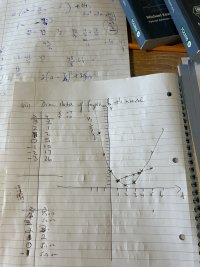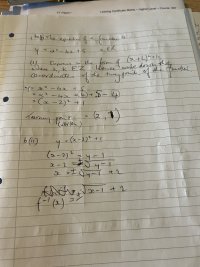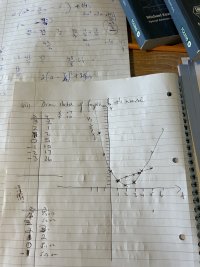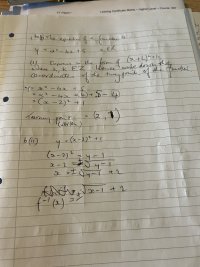Forgot the minus answer
Presumably the inverse can’t be drawn
Here are my initial workings
Everything I see looks correct,
if you have been taught to always choose the positive root for some reason. You have correctly graphed the function and the inverse of that function when restricted to x>=2 (that is, the inverse function restricted to y>=2). If you restricted the function to x<=2, the inverse would be [imath]-\sqrt{x-1}+2[/imath].
It's not that the inverse
can't be drawn, but that it
isn't fully defined; there are two possible inverse functions, and you chose one of them. (You could also draw the entire graph of [imath]\pm\sqrt{x-1}+2[/imath], but that isn't an inverse
function. Its graph would be an entire horizontal parabola.)
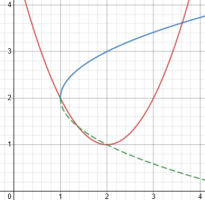
The original function is red; your inverse is blue, and the negative inverse is green. The blue inverse is actually the inverse of this restricted function:
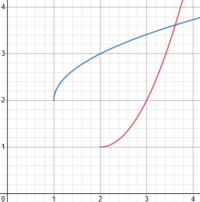
What is uncertain is what they actually expect of you, which may depend on knowing what you have been taught. If I were helping you in person, I would be looking in your textbook or notes to see what you have learned about this sort of situation. As I said, it is possible that they want you to wonder why your "inverse" is not an entire (reflected) parabola, and they will tell you in the next lesson; I just don't know.
Has the term "restricted domain" been introduced yet? Have you learned that the graph of the inverse is a reflection of the graph of the original function?
Forgot the - option which probably explains my query when entering a value for x of zero or less
Values of less than 1 simply are
not in the domain of the inverse; that's not related to the plus or minus in your inverse. The domain of the inverse will be the range of the original function, which is [1,infinity).


